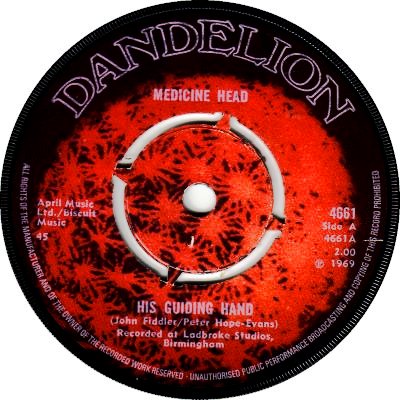
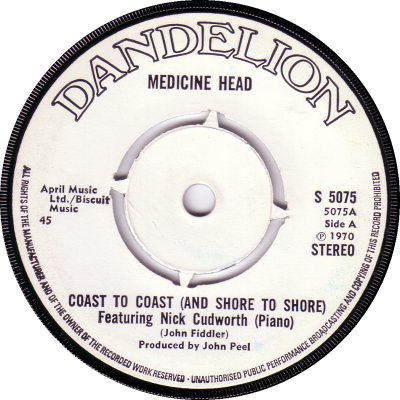
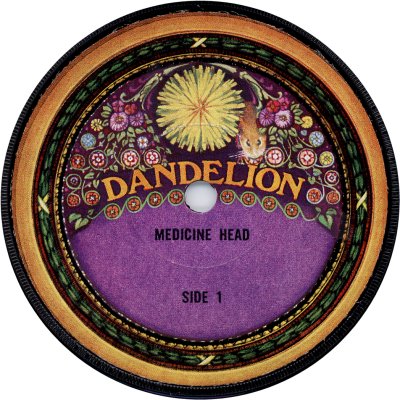
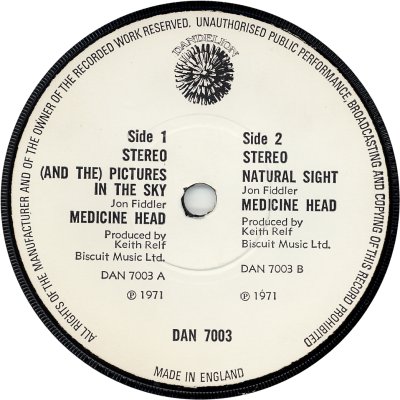
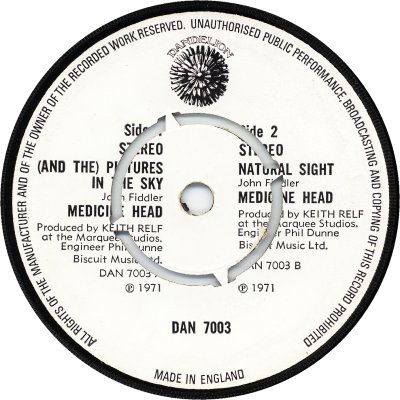
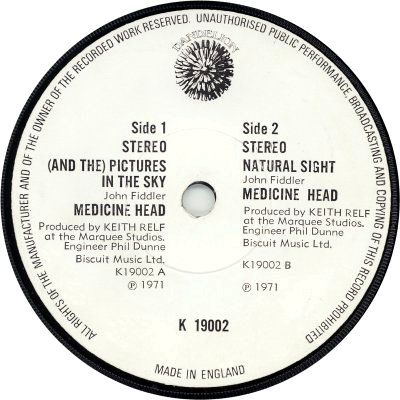
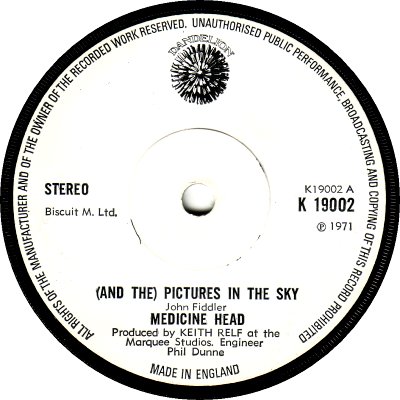
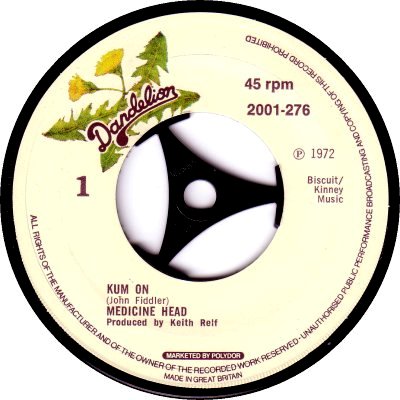


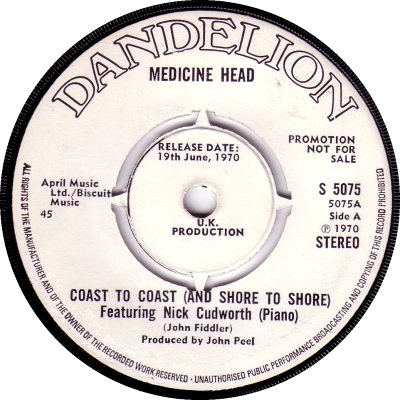
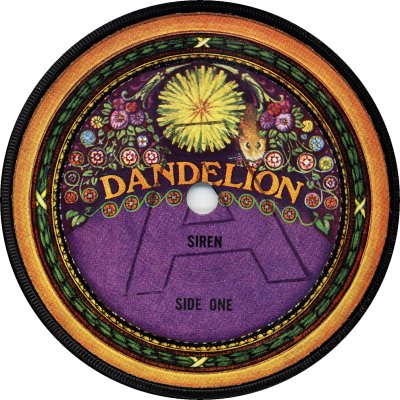
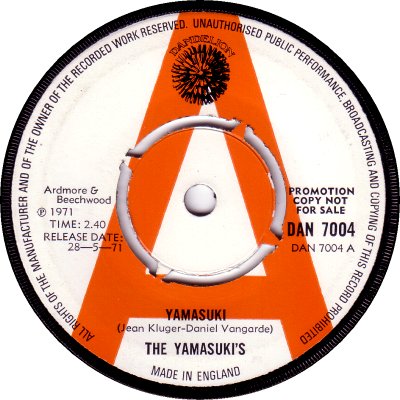
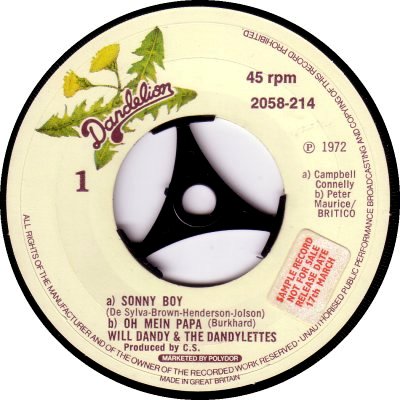
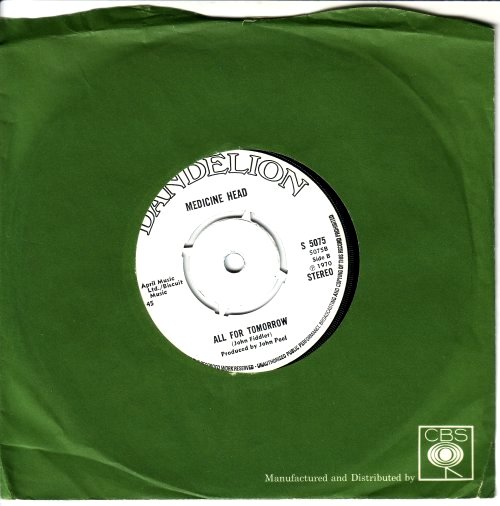
Dandelion was run by disc jockey John Peel and Clive Selwood. It was founded in 1969 as an outlet for material by people whose music Peel liked, people who had been unable to get a recording contract elsewhere; its roster of artists therefore reflected his eclectic tastes, and ranged from singer-songwriter Bridget St. John to proto-Punk group Stack Waddy, by way of Avant-garde-Jazz man Lol Coxhill. 'Record Retailer' of the 29th of January 1969 carried the first news of Peel's entering the music business: it said that he had set up 'Biscuit Music' - presumably as a production company - via a company called 'Mother Mistro Music', and was keen to record acts. The Dandelion label followed not long after, its imminent arrival being reported in 'RR' of the 18th of June, which said that the first three singles were due out the following month, through CBS. 'RR' of the 2nd of July gave a release date for them of July 18th.
The agreement with CBS came to an end in the spring of 1970. 'RR' of the 17th of October reported that the company's products were now licensed to Warner-Reprise, except for the USA where they were handled by Elektra. A relaunch was planned for January, but in the meantime a Bridget St. John single, 'If You've Got Money' b/w 'Yep', would be issued on the Warner Bros. label (WB-8019; 10/70). The first album by Burnin' Red Ivanhoe likewise appeared on Warner Bros. instead of Dandelion. 'RR' of the 12th of December added that Kinney would be undertaking marketing of Dandelion records from the 29th of January - by that time Warner-Reprise and its associated labels had been gathered under the 'Kinney Group' banner. The 29th was also given by 'RR' of the 9th of January 1971 as the date of Dandelion's rejuvenation, with albums by Stack Waddy, Siren and Principal Edwards Magic Theatre being scheduled for release. Pressing and distribution would still be by CBS; 'RR' of the 23rd of January claimed that the original deal with CBS still had five months to run, which suggests that the initial agreement has covered a two-year period. The new start was marked by the introduction of a new label, which had a multicoloured picture on one side (3) and the details on the other (4).
In the event Dandelion stayed with Kinney for just nine months. 'RR' of the 18th of September 1971 broke the news that Clive Selwood, who had been the European director of the Kinney Group, was resigning as from the end of the month and would be taking Dandelion with him. He is quoted as saying that it was "time I gave Dandelion the attention it needs. Kinney has so much marvellous material that Dandelion tends to get overlooked. It needs specialist treatment." He was looking for a new outlet for the label. According to the article there were still two years of the three-year agreement between Dandelion and Kinney to run, at that point. The new outlet was found quickly. The following week 'RR' (25th September) reported that a three-year marketing and distribution deal had been signed with Polydor. Under the agreement Dandelion's records were to appear on its own label in the UK but on Polydor elsewhere, though in the event the first single 'Pretty Girl (Parts 1 and 2)' by the Coxhill - Bedford Duo came out on Polydor here. Again the move was marked by the appearance of a new label, this time pale yellow with a picture of a dandelion on it (8).
Dandelion's spell with Polydor ended up not running the full three years. In its issue of the 17th of February 1973 Record Retailer's successor 'Music Week' said that Clive Selwood was to join CBS as general manager; Dandelion would continue as a production company but not as a label. That continuation never happened. 'MW' of the 3rd of March, in a retrospective on the label, said that it had ceased operations at the end of 1972 and was folded in December. According to the article the initial idea had been to give the artists total control over the music, but almost all of them had said that "they didn't want it - they wanted producers and the rest of the business organization." The article added that Dandelion had never made a profit and hadn't even covered its production costs, so keeping it going must have been something of a labour of love. As an aside, it noted that the very first Dandelion recording had been 'In A Broken Dream' by Python Lee Jackson, but that John Peel hadn't thought it suitable for the label and had licensed it to Miki Dallon - it eventually became a hit on Dallon's 'Young Blood International' label (q.v.).
Dandelion didn't sell many records at the time - its sole Singles Chart success came with Medicine Head's, 'Pictures In The Sky' b/w 'Natural Sight' (DAN-7003 / K-19002 ; 1971) - but over the years it has become a popular label with collectors. As stated above, it changed label designs and distributors several times during the three years of its existence. When it started off, with CBS, it had a dark red label featuring a dandelion clock (1), and its singles shared a four-figure catalogue sequence with those of the other CBS group companies, latterly with an 'S' in front of it. A simplified white label was used for several singles in 1970; according to Clive Selwood these white-label copies were for promotional purposes only, but while some copies have 'Promotion not for sale' and the release date on them (11) others do not (2), and the ones which don't can't be found with the 'dandelion clock' labels, which suggests that they were proper issues. During the time at Warner-Reprise / Kinney a design featuring on the 'A' side a picture of Peel's hamster 'Dandelion' in the midst of a collection of flowers was used (3, 4). It was an attractive design, but dinking perforations interfered with the credits (5), and the loss of the centres must have left the singles almost anonymous. At this point the company's singles were given their own numerical series, DAN-7000; re-pressings of two of them were re-numbered in the K-19000s (6) after Kinney began to adopt 'K' prefixes for all their products, which happened on the 1st of July 1971 ('RR', 15th May) - the same time that Kinney and CBS began a joint manufacture and distribution operation. Some copies of 'Pictures In The Sky' appeared with a white label (7); perhaps the record's success caused a shortage of the usual hamster-and-flowers labels, and the white ones - which usually were used on 'B' sides - were used as a stop-gap. The move to Polydor saw the introduction of the pale yellow label; in common with those of the Polydor / Philips group labels Dandelion's singles usually had their centres removed at the factory (8) but some copies retained them (9). The catalogue numbers were changed also, Dandelion singles generally sharing one of Polydor's main series, 2001-000.
During the CBS era promo copies were given overprinted issue labels (10, 11); some Kinney-era ones had white labels with a large orange 'A' on the appropriate side (13), CBS-style, while a hand-stamped hollow 'A' on copies of Siren's 'Strange Locomotion' b/w 'I'm All Aching' (DAN-7002; 5/71) appears to indicate a promo copy (12). During the Polydor era a 'Sample Record' sticker sufficed (14). The CBS-era sleeve (15) seems to have been used by several CBS-distributed labels, such as Mums.
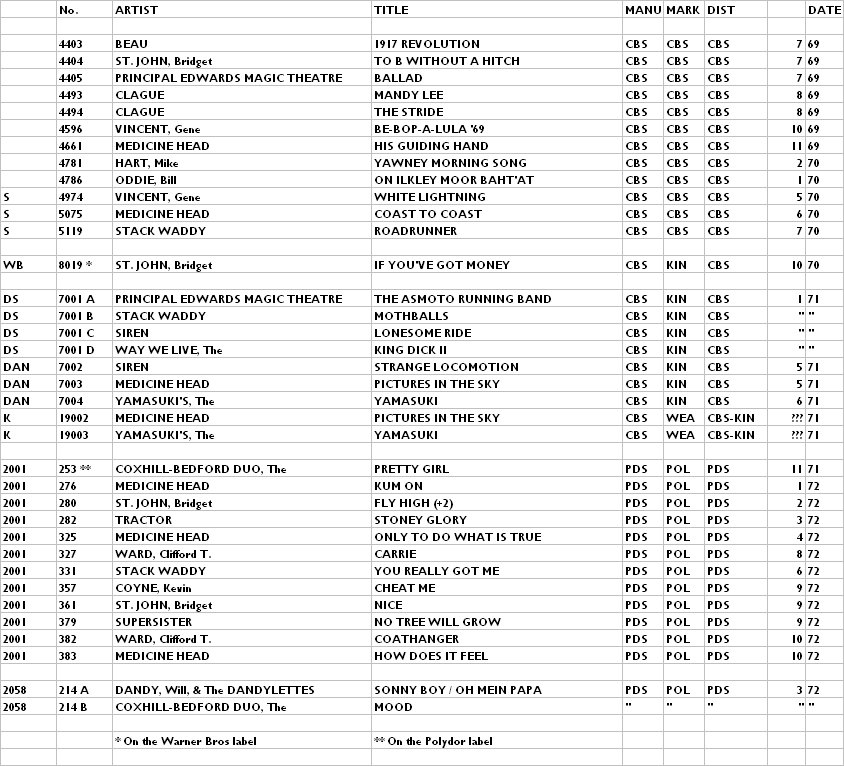


Copyright 2006 Robert Lyons.

